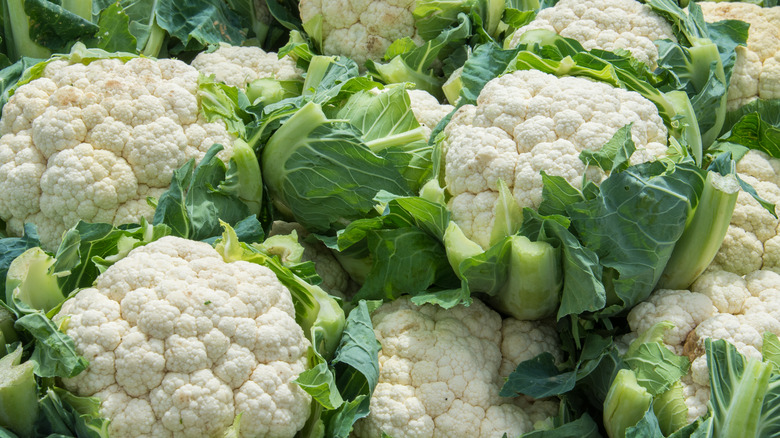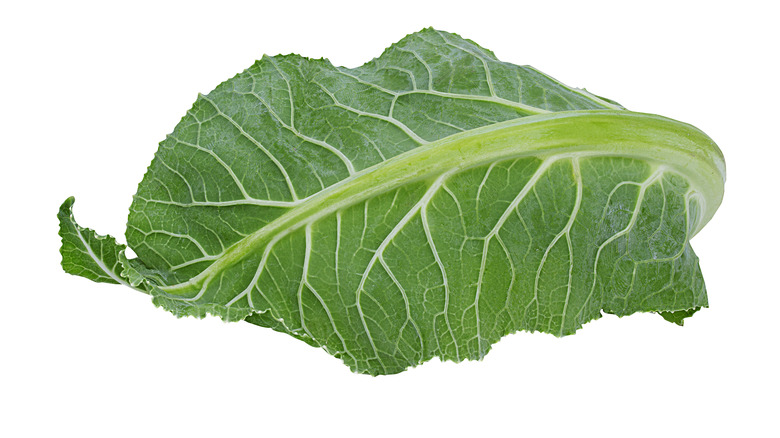The Big Mistake You're Making With Cauliflower
We often end up preparing certain foods in the same manner as we grew up eating them out of sheer familiarity. This can be noticeable when sharing meals with other adults, witnessing everyone's quirky habits. Change should be welcome, particularly when exploring with new recipes and ingredients. Even more so, when cooking with a common vegetable like cauliflower, it's good to take a new perspective. Many recipes stick to just using the florets, but it's definitely time to begin using the leaves.
When shopping at the supermarket, you'll probably have the choice between cauliflowers with more or less leaves. Instead of assuming you'll be tossing them out, pick the vegetable with the most leaves because you are about to start incorporating them wherever you can. Choose bright green leaves and avoid those that are faded or wilted, as they won't have the same crunch.
Gardening Channel suggests using cauliflower leaves in soups, stocks, and stews. They will soften as they cook and you'll forget you're eating something you used to discard. The site describes the leaves as similar to kale, yet sweeter. Another recipe recommendation on the page involves making something akin to cauliflower chips by baking the leaves with olive oil at high heat until crispy. If you're still hesitant, then start by simply throwing them into recipes where you would already include cauliflower florets.
Why are cauliflower leaves good for you?
Not only are they surprisingly pleasant to eat, cauliflower leaves also pack in numerous nutritional benefits. Gardening Channel notes that they are high in iron, phytochemicals, and antioxidants. Delish points out that the leaves assist in proper immune function due to high levels of selenium and vitamin C. The outlet adds that the leafy green part of the vegetable contains a fair bit of fiber, as well as vitamin A, calcium, and potassium. Surprisingly, The Health Site indicates that cauliflower leaves are one of the highest vegetable sources of calcium, promoting bone health. If that's not enough to convince you to start adding them to your dishes, Wellness Munch asserts that the leaves contain even more nutrients than the florets.
If you're already eating cauliflower, you have nothing to lose and everything to gain by adding the leaves into your next dish. If you're new to the cruciferous vegetable, seek out the leafiest one, choose a recipe, and get cooking.

